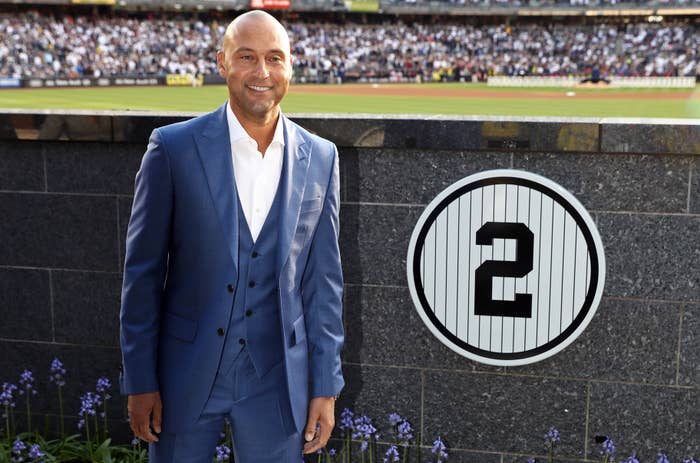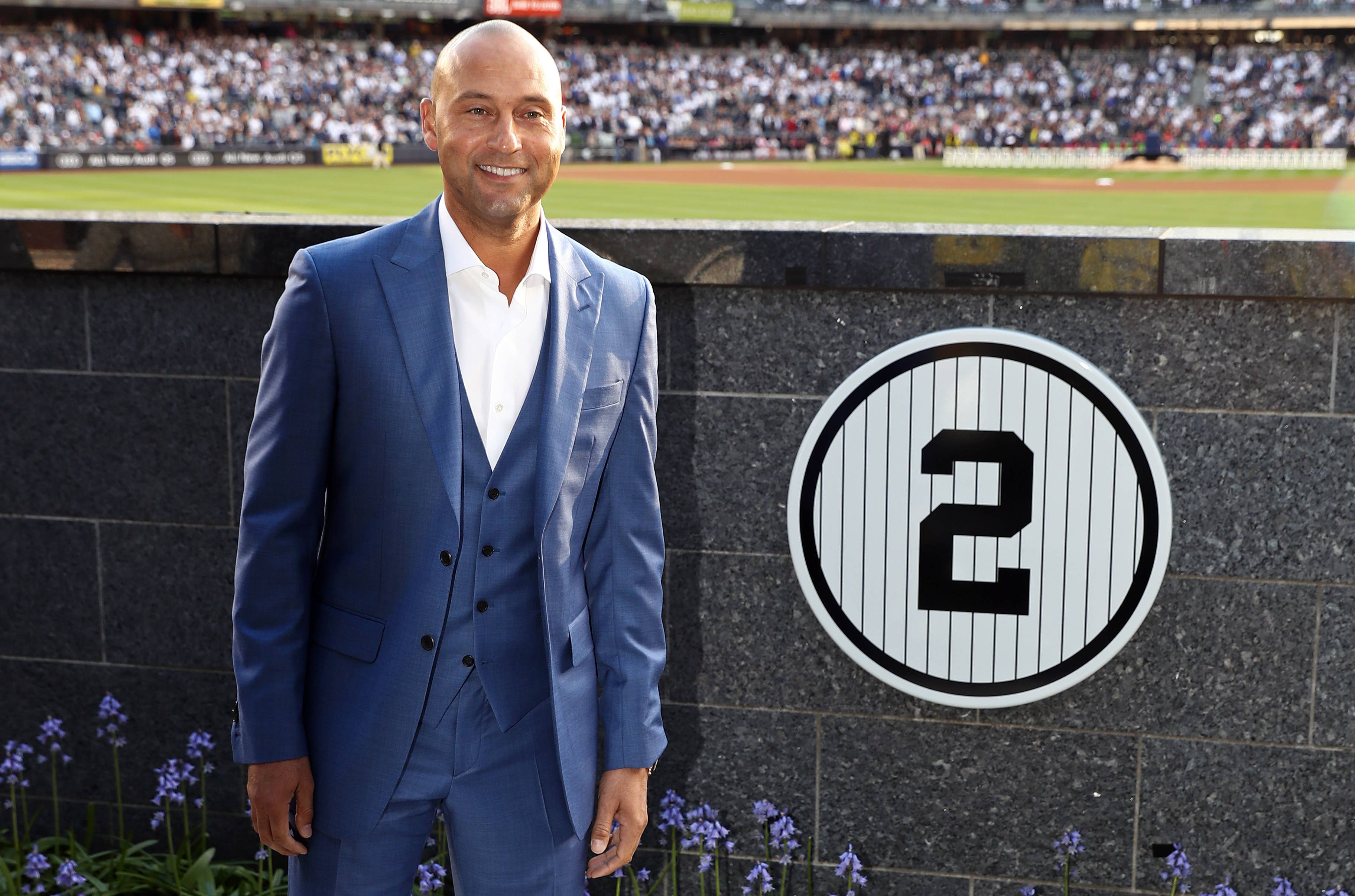
The New York Yankees retired Derek Jeter’s No. 2 on Sunday, and with that, Yankees can no longer wear single-digit numbers. (No. 0 is still technically available, but no Yankee has worn it in the franchise’s 115-year history and it seems unlikely anyone ever will.) Jeter’s No. 2 was the 20th number retired by the team. And, as valuable wall real estate in Monument Park is eaten up by yet another panel, maybe it’s time to reconsider the whole act of retiring numbers in the first place.
The very first number retirement occurred in 1934, when the Toronto Maple Leafs retired the No. 6 of right winger Ace Bailey. Bailey played eight seasons with the Leafs before his career was abruptly ended by a hard hit that resulted in a fractured skull. Fears for his life turned out to be greatly exaggerated—he’d live to the ripe old age of 88—but the Leafs paid tribute to his contributions by hosting an All-Star benefit game and hanging his number in the rafters.
Five years later, on July 4, 1939, the Yankees retired Lou Gehrig’s No. 4, becoming the first baseball franchise to retire a number. Like Bailey, Gehrig was in dire straits, suffering from amyotrophic lateral sclerosis, or ALS. Unlike Bailey, Gehrig wouldn’t recover—he died two years later at the age of 37. The Yankees wouldn’t retire another number for nearly a decade.
What began as a rare event, meant to honor a very select few, has become a virtual epidemic. The Yankees, as noted, have retired 20 numbers. The Boston Celtics—who retired their first two numbers, Bob Cousy’s No. 14 and “Easy Ed” Macauley’s No. 22 on the same day in 1963—have retired 21. And different teams have different standards. The Detroit Pistons, for example, have retired three numbers from a team that won one title, while the Chicago Bulls have retired two from a team that won six. And the Sacramento Kings have retired three numbers from a team that never won a championship at all.
There is no shortage of ways to honor players for their contributions to a team or a sport. There are Hall of Fames, of course; there are statues and monuments. It’s even possible to hang banners or put up signage without taking the numbers themselves out of circulation.
What is the best way for a sports franchise to recognize its own history? Is it to hang a number on the wall or from the rafters, never to be worn again? Or is it to issue it to a young up-and-comer in hopes that they can live up to the standard set by the legends who wore it before? The former approach is taken by professional teams, while the latter is taken by national teams. So while no one will ever wear Diego Maradona’s No. 10 with Italian club team Napoli, Leo Messi was able to wear Maradona’s No. 10 for Argentina and add new chapters to its distinguished history, giving a new generation their own memories to attach to the heralded shirt.
Number retirements are counterproductive. The best way to keep a memory alive is to keep the number itself in circulation. And if another great winds up wearing it, so what? It happens already—the Yankees have retired No. 8 twice, the Knicks have twice retired No. 15. Even Jackie Robinson’s No. 42, which has been retired league-wide, should remain in circulation. The best way for today’s players to pay tribute to Jackie Robinson would be for players to be dirtying a No. 42 jersey daily, not just during one game a year.
There is no shortage of ways to honor players for their contributions to a team or a sport. There are Hall of Fames, of course; there are statues and monuments. It’s even possible to hang banners or put up signage without taking the numbers themselves out of circulation. The University of North Carolina does that. Of the 51 jerseys hanging in the Dean Dome rafters, only eight are retired. Plus, if we stop retiring numbers we won’t have silly problems like “which number should the Lakers retire for Kobe Bryant?” anymore.
Following Jeter’s number retirement ceremonies on Sunday, Yankees starting pitcher Masahiro Tanaka went out and got unceremoniously stomped. He gave up back-to-back homers to the first two batters he faced and then, six batters later, gave up a grand slam to 23-year-old Astros third baseman Alex Bregman, the first grand slam of his career.
Bregman, who was born in 1994, is in his second season with the Astros. He wears No. 2 in honor of Jeter, whom he idolized growing up. “I guess it was the No. 2 magic,” he said afterward. “It was a really cool moment.” It’s a moment no current or upcoming Yankee will ever get to feel. Which is a damn shame.

